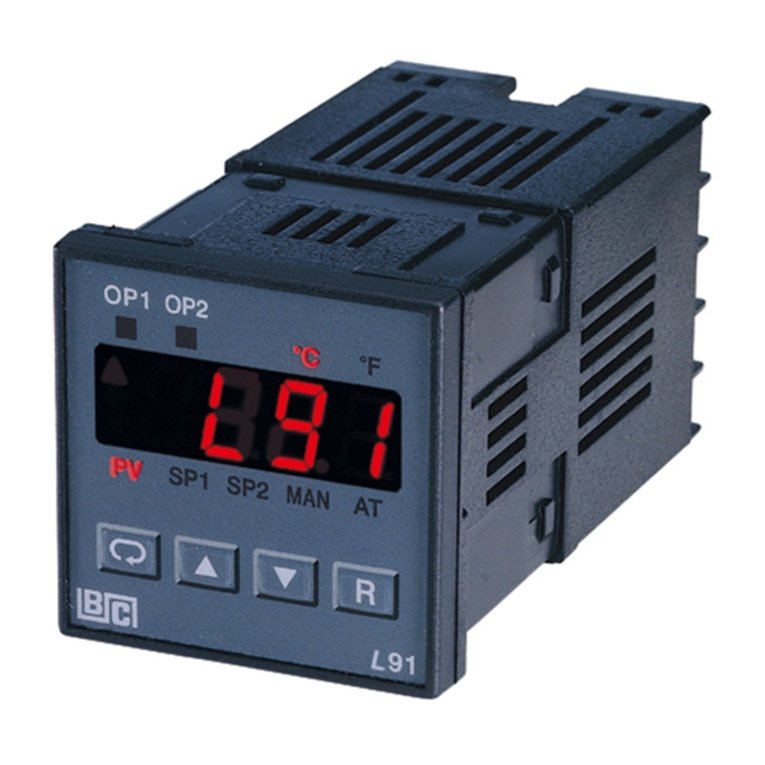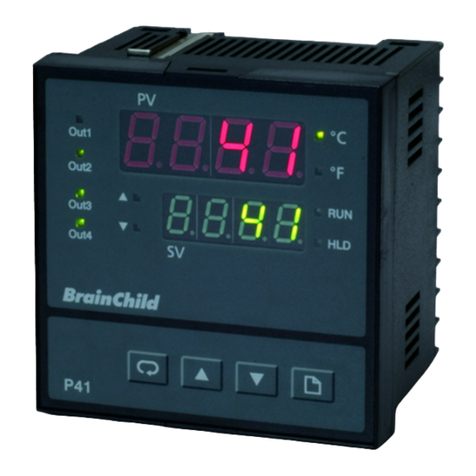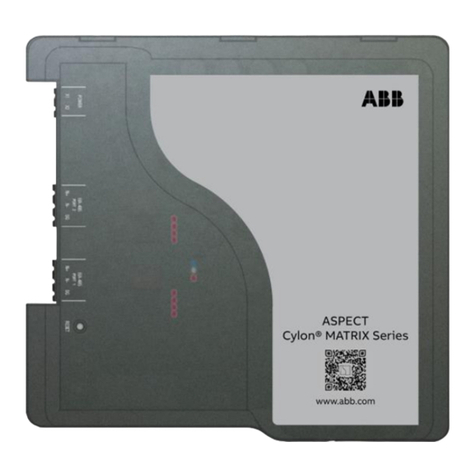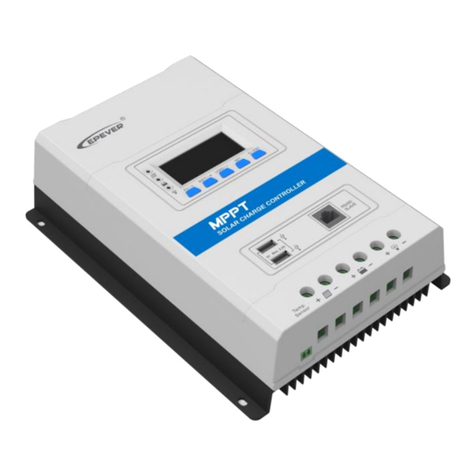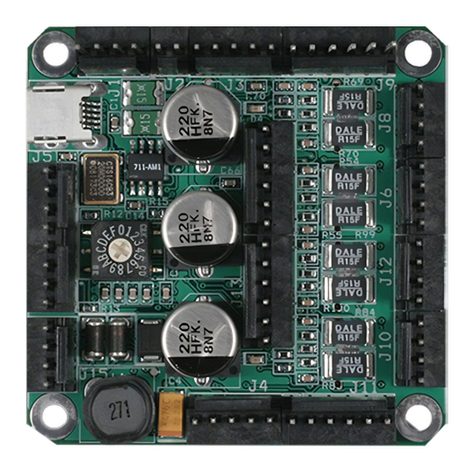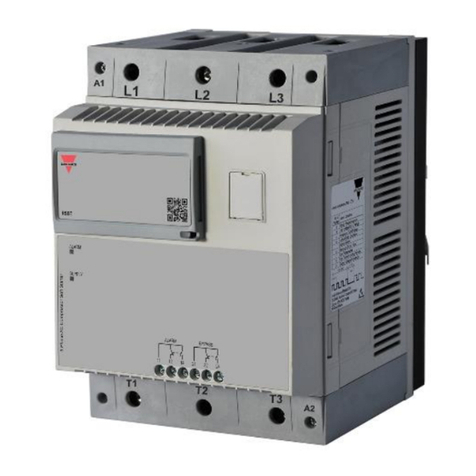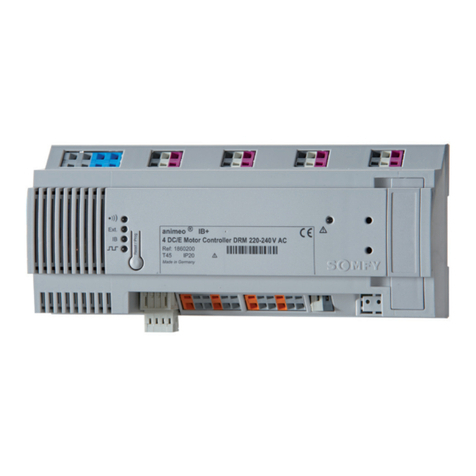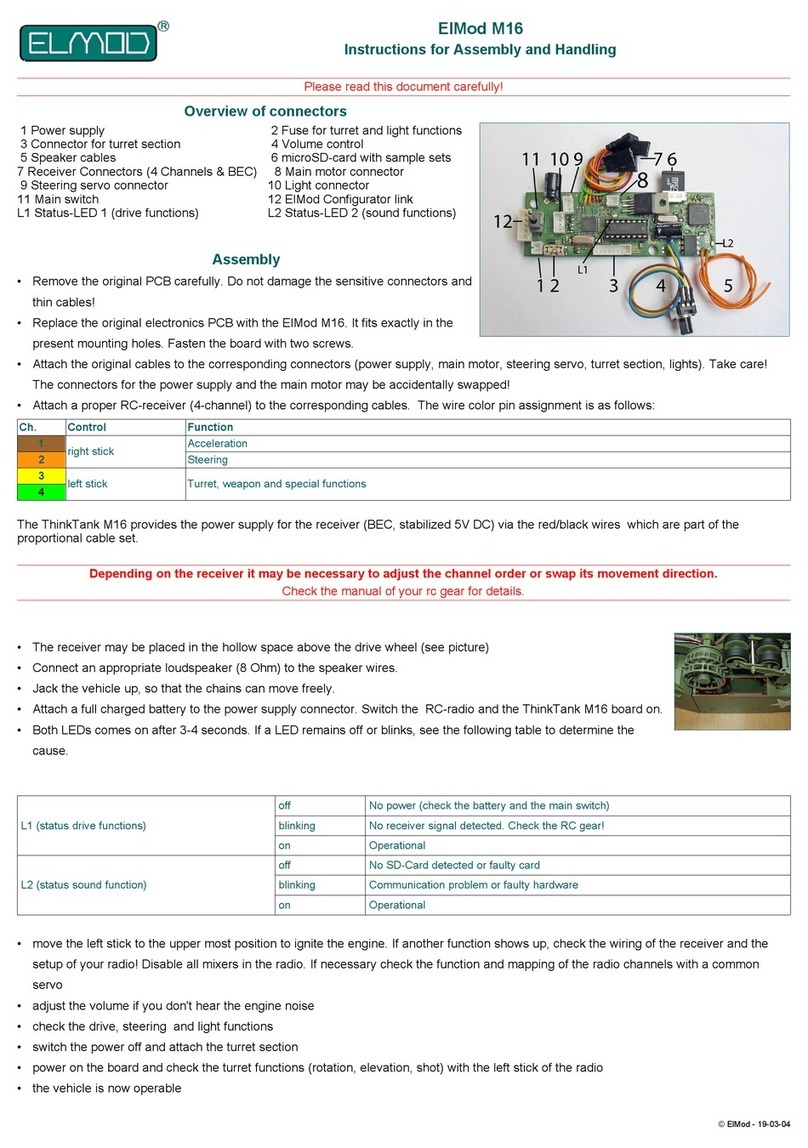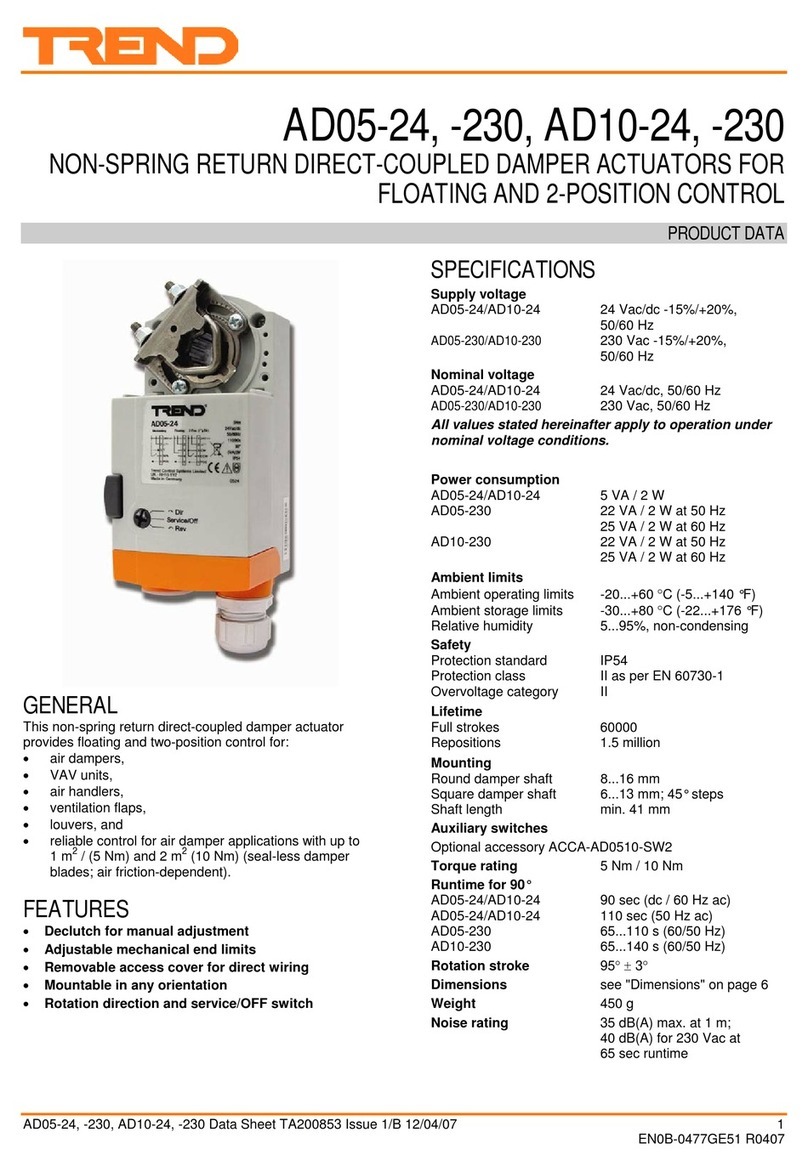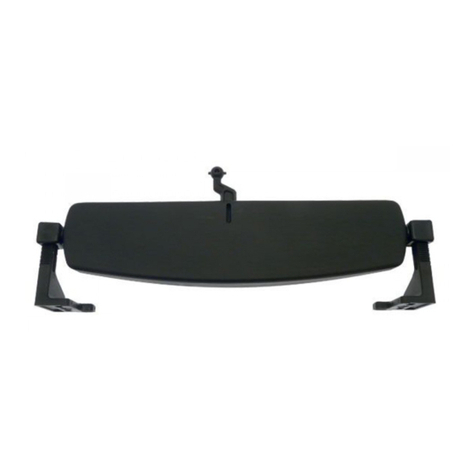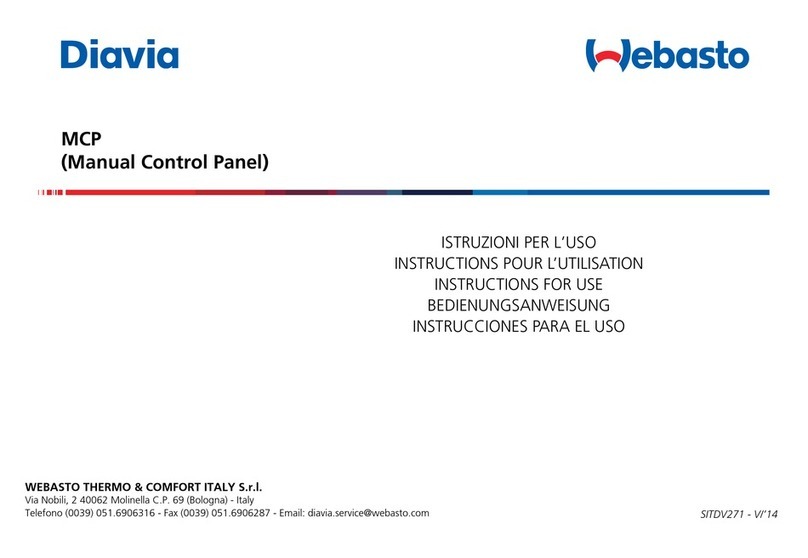Brainchild C21 User manual

User's ManualUser's Manual
BRAINCHILD
UM0C911D
DIN EN ISO 9001
Certificate: 01 100 98505
C21 / C91
Auto-Tune Fuzzy / PID
Process / Temperature Controller
C21 /C91
Auto-Tune Fuzzy /PID
Process /Temperature Controller
R
R

Warning SymbolWarning Symbol
Use the ManualUse the Manual
The Symbol calls attention to an operating procedure, practice, or the
like, which, if not correctly performed or adhered to, could result in
personal injury or damage to or destruction of part or all of the
product and system. Do not proceed beyond a warning symbol until
the indicated conditions are fully understood and met.
Installers
System Designer
Expert User
Read Chapter 1, 2
Read All Chapters
Read Page 12
NOTE:
It is strongly recommended that a process should incorporate a
LIMIT CONTROL like L91 which will shut down the equipment at
a preset process condition in order to preclude possible
damage to products or system.
It is strongly recommended that aprocess should incorporate a
LIMIT CONTROL like L91 which will shut down the equipment at
apreset process condition in order to preclude possible
damage to products or system.
Information in this user's manual is subject to change without notice.
Copyright April 2003, The Brainchild Corporation, all rights
reserved. No part of this publication may be reproduced, transmitted,
transcribed or stored in a retrieval system, or translated into any
language in any form by any means without the written permission of
the Brainchild Corporation.
a
UM0C911C2
This manual is applicable for the products with software version
23 and later version.
This manual is applicable for the products with software version
23 and later version.

UM0C911A 3
Contents
Chapter 1 OverviewChapter 1Overview
1-1 General -------------------------5
1-2 Ordering Code ---------------8
1-3 Programming Port ------------9
1-4 Keys and Displays ---------10
1-5 Menu Overview -------------12
1-6 Parameter Descriptions ---13
Page No
Chapter 2 Installation
Chapter 2Installation
2-1 Unpaking ----------------------20
2-2 Mounting ----------------------20
2-3 Wiring precautions ----------22
2-4 Power Wiring -----------------25
2-5 Sensor Installation ----------
Guidlines----------------------25
2-6 Sensor Input Wiring --------26
2-7 Control Output Wiring -----26
2-8 Alarm Wiring -----------------30
2-9 Data Communication ------31
Chapter 3 Programming
Chapter 3Programming
3-1 Lockout ------------------------33
3-2 Signal Input -------------------33
3-3 Control Outputs --------------34
3-4 Alarm ---------------------------39
3-5 Configure Display -----------40
3-6 Ramp ---------------------------41
3-7 Dwell Timer -------------------42
3-8 PV Shift ------------------------43
3-9 Digital Filter -------------------44
3-10 Failure Transfer -------------45
3-11 Auto-tuning ------------------46
3-12 Manual tuning --------------47
3-13 Manual Control -------------48
3-14 Data Communication -----50
3-15 PV Retransmission --------50
Chapter 4 Applications
Chapter 4Applications
Chapter 5 Calibration --------55Chapter 5Calibration
Chapter 6 Specifications ----60Chapter 6Specifications
Page No
4-1 Heat Only Control with --
Dwell Timer ------------------51
4-2 Cool Only Control -----------52
4-3 Heat-Cool Control -----------53
Appendix
A-1 Error Codes ------------------76
A-2 Warranty ----------------------77
Chapter 7
Modbus Communications---66
Chapter 7
Modbus Communications
7-1 Functions Supported -------66
7-2 Exception Responses -----68
7-3 Parameter Table -------------69
7-4 Data Conversion ------------73
7-5 Communication Examples-73

Figures & TablesFigures &Tables Page No
Figure 1.1 Fuzzy Control Advantage ----------------------------------------------------------------6
Figure 1.2 Programming Port Overview ------------------------------------------------------------9
Figure 1.4 Display of Initial Stage -------------------------------------------------------------------11
Figure 2.1 Mounting Dimensions -------------------------------------------------------------------21
Figure 2.2 Lead Termination for C91 -------------------------------------------------------------23
Figure 2.3 Lead Termination for C21---------------------------------------------------------------23
Figure 2.4 Rear Terminal Connection for C21--------------------------------------------------23
Figure 2.5 Rear Terminal Connection for C91----- --------------------------------------------24
Figure 2.7 Power Supply Connections ------------------------------------------------------------25
Figure 2.8 Sensor Input Wiring ----------------------------------------------------------------------26
Figure 2.9 Output 1 Relay or Triac (SSR) to Drive Load ---------------------------------------26
Figure 2.10 Output 1 Relay or Triac (SSR) to Drive Contactor -------------------------------27
Figure 2.11 Output 1 Pulsed Voltage to Drive SSR ---------------------------------------------27
Figure 2.12 Output 1 Linear Current ---------------------------------------------------------------28
Figure 2.13 Output 1 Linear Voltage ---------------------------------------------------------------28
Figure 2.14 Output 2 Relay or Triac (SSR) to Drive Load -------------------------------------28
Figure 2.15 Output 2 Relay or Triac (SSR) to Drive Contactor -------------------------------29
Figure 2.16 Output 2 Pulsed Voltage to Drive SSR ---------------------------------------------29
Figure 2.17 Output 2 Linear Current ---------------------------------------------------------------29
Figure 2.18 Output 2 Linear Voltage --------------------------------------------------------------30
Figure 2.19 Alarm Output to Drive Load ----------------------------------------------------------30
Figure 2.20 Alarm Output to Drive Contactor ----------------------------------------------------30
Figure 2.21 RS-485 Wiring ---------------------------------------------------------------------------31
Figure 2.22 RS-232 Wiring ---------------------------------------------------------------------------32
Figure 2.23 Configuration of RS-232 Cable ------------------------------------------------------32
Figure 3.1 Conversion Curve for Linear Type Process Value ---------------------------------34
Figure 3.2 Heat Only ON-OFF Control ------------------------------------------------------------35
Figure 3.3 Output 2 Deviation High Alarm --------------------------------------------------------38
Figure 3.4 Output 2 Process Low Alarm ----------------------------------------------------------38
Figure 3.5 RAMP Function ---------------------------------------------------------------------------41
Figure 3.6 Dwell Timer Function --------------------------------------------------------------------42
Figure 3.7 PV Shift Application ----------------------------------------------------------------------43
Figure 3.8 Filter Characteristics ---------------------------------------------------------------------44
Figure 3.9 Effects of PID Adjustment -------------------------------------------------------------49
Figure 4.1 Heat Control Example -------------------------------------------------------------------51
Figure 4.2 Cooling Control Example ---------------------------------------------------------------52
Figure 4.3 Heat-Cool Control Example ------------------------------------------------------------53
Figure 5.1 RTD Calibration ---------------------------------------------------------------------------57
Figure 5.2 Cold Junction Calibration Setup ------------------------------------------------------58
Table 1.1 Display Form of Characters -------------------------------------------------------------11
Table 3.1 Heat-Cool Control Setup Value ---------------------------------------------------------34
Table 3.2 PID Adjustment Guide --------------------------------------------------------------------48
Table A.1 Error Codes and Corrective Actions --------------------------------------------------66
Figure 1.3 Front Panel Description -----------------------------------------------------------------11
UM0C911B4

Chapter 1 OverviewChapter 1Overview
1-1 General1-1 General
The Fuzzy Logic plus PID microprocessor-based controller series,
incorporate a bright, easy to read 4-digit LED display, indicating
process value or set point value. The Fuzzy Logic technology
enables a process to reach a predetermined set point in the
shortest time, with the minimum of overshoot during power-up or
external load disturbance.
C21 is a 1/32 DIN size panel mount controller. C91 is a 1/16 DIN size
panel mount controller. These units are powered by 11-26 or 90-250
VDC/VAC supply, incorporatinga2amp.controlrelayoutput as
standard. The second output can be used as cooling control, an
alarm or dwell timer. Both outputs can select triac, 5V logic output,
linear current or linear voltage to drive external device. There are
six types of alarm plus a dwell timer can be configured for the
second output.The units are fully programmable for PT100 and
thermocouple types J,K, T, E, B, R, S, N, L with no need to modify the
unit. The input signal is digitized by using a 18-bit A to D converter.
Its fast sampling rate allows the unit to control fast processes.
Digital communications RS-485 or RS-232 ( for C21, C91) are
available as an additional option. These options allow the units to be
integrated with supervisory control system and software.
A programming port is available for automatic configuration,
calibration and testing without the need to access the keys on front
panel.
By using proprietary Fuzzy modified PID technology, the control
loop will minimize the overshoot and undershoot in a shortest
time. The following diagram is a comparison of results with and
without Fuzzy technology.
UM0C911B 5

UM0C911A6
PID control with properly tuned
PID + Fuzzy control
Warm Up Load Disturbance
Set
point
Temperature
Time
High AccuracyHigh Accuracy
The series are manufactured with custom designed ASIC(Application
Specific Integrated Circuit ) technology which contains a 18-bit A to
D converter for high resolution measurement ( true 0.1 F resolution
for thermocouple and PT100 ) and a 15-bit D to A converter for linear
current or voltage control output. The ASIC technology provides
improved operating performance, low cost, enhanced reliability and
higher density.
B
Fast Sampling Rate
Fast Sampling Rate
The sampling rate of the input A to D converter reaches 5 times/second.
The fast sampling rate allows this series to control fast processes.
Fuzzy ControlFuzzy Control
The function of Fuzzy control is to adjust PID parameters from time to
time in order to make manipulation output value more flexible and
adaptive to various processes. The results is to enable a process to
reach a predetermined set point in the shortest time, with the minimum
of overshoot and undershoot during power-up or external load
disturbance.
Digital Communication
Digital Communication
The units are equipped with RS-485 or RS-232 interface card to
provide digital communication. By using the twisted pair wires there
are at most 247 units can be connected together via RS-485 interface
to a host computer.
Figure 1.1
Fuzzy Control
Advantage
Figure 1.1
Fuzzy Control
Advantage

Programming PortProgramming Port
A programming port is used to connect the unit to a hand-held
programmer or a PC for quick configuration, also can be connected
to an ATE system for automatic testing & calibration.
Auto-tune
The auto-tune function allows the user to simplify initial setup for a
new system. A clever algorithm is provided to obtain an optimal set
of control parameters for the process, and it can be applied either as
the process is warming up ( cold start ) or as the process has been
in steady state ( warm start ).
Lockout Protection
Lockout Protection
According to actual security requirement, one of four lockout levels
can be selected to prevent the unit from being changed abnormally.
Bumpless Transfer
Bumpless Transfer
Bumpless transfer allows the controller to continue to control by
using its previous value as the sensor breaks. Hence, the process
can be well controlled temporarily as if the sensor is normal.
Soft-start Ramp
Soft-start Ramp
The ramping function is performed during power up as well as any
time the set point is changed. It can be ramping up or ramping
down. The process value will reach the set point with a predetermined
constant rate.
Digital FilterDigital Filter
A first order low pass filter with a programmable time constant is used
to improve the stability of process value. This is particularly useful in
certain application where the process value is too unstable to be read.
UM0C911A 7

UM0C911D
8
Power InputPower Input
4: 90 - 250 VAC,
47-63 HZ
5: 11 - 26 VAC or VDC,
SELV, Limited Energy
4: 90 - 250 VAC,
47-63 HZ
5: 11 - 26 VAC or VDC,
SELV, Limited Energy 0: None
1: RS-485 interface (for C21)
2: RS-232 interface (for C21)
3: Retransmit 4-20 mA / 0-20
mA (for C21)
4: Retransmit 1-5V /0-5V
(for C21)
5: Retransmit 0-10V (for C21)
9: Special order
0: None
1: RS-485 interface (for C21)
2: RS-232 interface (for C21)
3: Retransmit 4-20 mA / 0-20
mA (for C21)
4: Retransmit 1-5V /0-5V
(for C21)
5: Retransmit 0-10V (for C21)
9: Special order
Communications
0: None
1: Relay rated 2A/240VAC
2: Pulsed voltage to drive SSR,
5V/30mA
3: Isolated4-20mA/0-20mA
4: Isolated1-5V/0-5V
5: Isolated0-10V
6: Triac output 1A / 240VAC,SSR
C: Pulsed voltage to drive SSR,
14V/40mA
9: Special order
0: None
1: Relay rated 2A/240VAC
2: Pulsed voltage to drive SSR,
5V/30mA
3: Isolated 4 - 20mA / 0 - 20mA
4: Isolated 1 - 5V / 0 - 5V
5: Isolated 0 - 10V
6: Triac output 1A / 240VAC,SSR
C: Pulsed voltage to drive SSR,
14V/40mA
9: Special order
Output 1Output 1
1: Standard Input
Thermocouple: J, K, T, E, B,
R, S, N, L
RTD: PT100 DIN, PT100 JIS
2:0-60mA
3:0-1V
4:0-5V
5:1-5V
6:4-20mA
7:0-20mA
8:0-10V
9: Special Order
1: Standard Input
Thermocouple: J, K, T, E, B,
R, S, N, L
RTD: PT100 DIN, PT100 JIS
2: 0 - 60 mA
3: 0 - 1V
4: 0 - 5V
5: 1 - 5V
6: 4 - 20 mA
7: 0 - 20 mA
8: 0 - 10 V
9: Special Order
Signal InputSignal Input
C21-
C91-
C21-
C91-
0: None
1: Form A relay 2A/240VAC
2: Pulsed voltage to
drive SSR, 5V / 30mA
3: Isolated4-20mA/0-20mA
4: Isolated1-5V/0-5V
5: Isolated0-10V
6: Triac output, 1A / 240VAC, SSR
7: Isolated 20V/25mA transducer
power supply
8: Isolated 12V/40mA transducer
power supply
9: Isolated 5V/80mA transducer
power supply
A: RS-485 interface (for C91)
C: Pulsed voltage to drive SSR,
14V/40mA
D: Retransmit 4-20mA/0-20mA
(for C91)
E: Retransmit 1-5V/0-5V (for C91)
F: Retransmit 0-10V (for C91)
B: Special order
0: None
1: Form A relay 2A/240VAC
2: Pulsed voltage to
drive SSR, 5V / 30mA
3: Isolated 4 - 20mA / 0 - 20mA
4: Isolated 1 - 5V / 0 - 5V
5: Isolated 0 - 10V
6: Triac output, 1A / 240VAC, SSR
7: Isolated 20V/25mA transducer
power supply
8: Isolated 12V/40mA transducer
power supply
9: Isolated 5V/80mA transducer
power supply
A: RS-485 interface (for C91)
C: Pulsed voltage to drive SSR,
14V/40mA
D: Retransmit 4-20mA/0-20mA
(for C91)
E: Retransmit 1-5V/0-5V (for C91)
F: Retransmit 0-10V (for C91)
B: Special order
Output 2Output 2
1-2 Ordering Code1-2 Ordering Code
0: Red color
1: Green color
0: Red color
1: Green color
Display ColorDisplay Color

OM94-6 = Isolated 1A / 240VAC Triac Output Module ( SSR )
OM94-7 = 14V / 40 mA SSR Drive Module
OM96-3 = Isolated 4 - 20 mA /0-20mAAnalog Output Module
OM96-4 = Isolated1-5V/0-5VAnalog Output Module
OM96-5 = Isolated 0 -10V Analog Output Module
CM94-1 = Isolated RS-485 Interface Module for C21
CM94-2 = Isolated RS-232 Interface Module for C21
CM94-3 = Isolated 4 - 20 mA /0-20mARetrans Module for C21
CM94-4 = Isolated1-5V/0-5VRetrans Module for C21
CM94-5 = Isolated 0 -10V Retrans Module for C21
CM96-1 = Isolated RS-485 Interface Module for C91
DC94-1 = Isolated 20V/25mA DC Output Power Supply
DC94-2 = Isolated 12V/40mA DC Output Power Supply
DC94-3 = Isolated 5V/80mA DC Output Power Supply
CC94-1 = RS-232 Interface Cable ( 2M )
CC91-1 = Programming port cable for C21
CC91-2 = Programming port cable for C91
OM94-6 = Isolated 1A / 240VAC Triac Output Module ( SSR )
OM94-7 = 14V / 40 mA SSR Drive Module
OM96-3 = Isolated 4 - 20 mA / 0 - 20 mA Analog Output Module
OM96-4 = Isolated 1 - 5V / 0 - 5V Analog Output Module
OM96-5 = Isolated 0 -10V Analog Output Module
CM94-1 = Isolated RS-485 Interface Module for C21
CM94-2 = Isolated RS-232 Interface Module for C21
CM94-3 = Isolated 4 - 20 mA / 0 - 20 mA Retrans Module for C21
CM94-4 = Isolated 1 - 5V / 0 - 5V Retrans Module for C21
CM94-5 = Isolated 0 -10V Retrans Module for C21
CM96-1 = Isolated RS-485 Interface Module for C91
DC94-1 = Isolated 20V/25mA DC Output Power Supply
DC94-2 = Isolated 12V/40mA DC Output Power Supply
DC94-3 = Isolated 5V/80mA DC Output Power Supply
CC94-1 = RS-232 Interface Cable ( 2M )
CC91-1 = Programming port cable for C21
CC91-2 = Programming port cable for C91
Accessories
SNA10B = Smart Network Adaptor for BC-Net software, which
converts 255 channels of RS-485 or RS-422 to RS-232
network.
SNA10B = Smart Network Adaptor for BC-Net software, which
converts 255 channels of RS-485 or RS-422 to RS-232
network.
SNA10A = Smart Network Adaptor for third party software, which
converts 255 channels of RS-485 or RS-422 to RS-232
Network.
SNA10A = Smart Network Adaptor for third party software, which
converts 255 channels of RS-485 or RS-422 to RS-232
Network.
Related ProductsRelated Products
BC-Set = Configuration SoftwareBC-Set = Configuration Software
SNA12A = Smart Network Adaptor for programming port to RS-232
interface
SNA12A = Smart Network Adaptor for programming port to RS-232
interface
UM0C911C 8-1

1-3 Programming Port1-3 Programming Port
Figure 1.2 Programming Port OverviewFigure 1.2 Programming Port Overview
A special connector can be used to touch the programming port
which is connected to a PC for automatic configuration, also can be
connected to an ATE system for automatic calibration and testing.
The programming port is used for off-line automatic setup and testing
procedures only. Don't attempt to make any connection to these pins
when the unit is used for a normal control purpose.
UM0C911B
Front
Panel Rear
Terminal
Access Hole
1
3
46 2
5
C21
Open the housing
TopviewofC91
Programming Port
control board
Power board
pin 1
9

1- 4 Keys and Displays1- 4 Keys and Displays
KEYPAD OPERATIONKEYPAD OPERATION
SCROLL KEY :
UP KEY :
DOWN KEY :
RESET KEY :
ENTER KEY :
This key is used to select a parameter to be viewed or adjusted.
This key is used to increase the value of selected parameter.
This key is used to decrease the value of selected parameter.
This key is used to:
1. Revert the display to display the process value or set point value
(if DISP is set with SP1 for C21).
2. Reset the latching alarm, once the alarm condition is
removed.
3. Stop the manual control mode , auto-tuning mode and calibration
mode.
4. Clear the message of communication error and auto-tuning error.
5. Restart the dwell timer when the dwell timer has been time out.
6. Enter the manual control menu during failure mode occurs.
Press for 5 seconds or longer .
Press for 5 seconds to:
1. Ener setup menu. The display shows .
2. Enter manual control mode during manual control mode
or is selected.
3. Enter auto-tuning mode during auto-tuning mode AT(for C91)
or (for C21) is selected.
4. Perform calibration to a selected parameter during the
calibration procedure.
Press for 4.2 seconds to select calibration mode.
SCROLL KEY :
UP KEY :
DOWN KEY :
RESET KEY :
ENTER KEY :
R
UM0C911C
press for C91 and C92, press for C21press for C91 and C92, press for C21
10

: Confused Character: Confused Character
Table 1.1 Display Form of CharactersTable 1.1 Display Form of Characters
AEINSX
BFJOTY
CGKPUZ
cHLQV
?
Dh
MRW=
Figure 1.3 Front Panel DescriptionFigure 1.3 Front Panel Description
UM0C911C
The left diagram shows program no. 34
for C91 with version 24.
The program no. for C21 is 33.
Display program code of the product
for 2.5 seconds.
Figure 1.4
Display of Initial Stage
Figure 1.4
Display of Initial Stage
Output 2
Indicator
Output 2
Indicator
Output 1
Indicator
Output 1
Indicator
3 Silicone Rubber Buttons
for ease of control setup
and set point adjustment.
3Silicone Rubber Buttons
for ease of control setup
and set point adjustment.
C21
O1
O2
C
4 Buttons for ease of
control setup and
set point adjustment.
Output 2
Indicator Process Unit Indicator
Manual Mode Indicator
Auto-tuning Indicator
PV
MAN
AT
SP2SP1
F
C
C91
OP1
OP2
R
Output 1
Indicator
Deviation Indicator
11
PV
MAN
AT
SP2SP1
F
C
C91
OP1
OP2
R

1- 5 Menu Overview1- 5Menu Overview
SP1
SP2
PV
ADLO
ADHI
RTDL
CJLO
RTDH
CJHI
7.4 sec.
User menu *1User menu *1 Setup menu*1Setup menu*1 Calibration ModeCalibration Mode
Press for
5 seconds to
perform calibration.
UM0C911C
*2
H
C
PV
Apply these modes will
break the control loop
and change some of the
previous setting data.
Make sure that if the
system is allowable to
apply these modes.
The flow chart shows a
complete listing of all
parameters. For actual
application the number of
available parameters
depends on setup
conditions, and should be
less than that shown in
the flow chart.
Release , press
again for 2 seconds or
longer (but not longer
than 3 seconds), then
release to enter the
calibration menu.
*1:
*2:
2 sec.
LOCK
INPT
UNIT
DP
INLO
SP1L
INHI
SP1H
SHIF
FILT
DISP
OUT1
O1TY
O1FT
O1HY
CYC1
PB
TI
TD
OFST
RAMP
RR
OUT2
O2TY
O2FT
O2HY
CYC2
CPB
DB
ALMD
COMM
ADDR
BAUD
DATA
PARI
STOP
RELO
REHI
SEL1
SEL2
SEL3
SEL4
SEL5
SEL6
SEL7
SEL8
6.2 sec.
Value
Value
Value
Value
5 sec.
Manual
Mode
Manual
Mode
Manual
Mode
Manual
Mode
Auto-tuning
Mode
Auto-tuning
Mode
PV
SP1
SP2
MAN
AT
MAN
C91
User Menu *1User Menu *1
(DISP=PV) (DISP=SP1)
SP1
SP2
H
C
A-T
Manual
Mode
Manual
Mode
5 sec.
Auto-tuning
Mode
Auto-tuning
Mode
C21
or
PV SP1
Value
or
PV
Value
Manual
Mode
Manual
Mode
5 sec.
5 sec.
5 sec.
5 sec.
INPT
UNIT
DP
PB
TI
TD
CYC1
ADDR
Value
Value
INPT
UNIT
DP
PB
TI
TD
CYC1
ADDR
Value
Value
5sec.
12

1-6 Parameter Descriptions1-6 Parameter Descriptions
Parameter
Notation Default
Value
Select parameters to be
locked
0 : No parameter
is locked
1 : Setup data are
locked
2 : Setup data and
User data except Set
point are locked
3 : All data are locked
LOCK 0
Parameter Description Range
0
1
2
3
4
5
6
:
:
:
:
:
:
:
T type thermocouple
E type thermocouple
B type thermocouple
R type thermocouple
S type thermocouple
J type thermocouple
K type thermocouple
7
13
8
14
9
10
11
12
N type thermocouple
L type thermocouple
PT 100 ohms DIN
curve
PT 100 ohms JIS
curve
4 - 20 mA linear
current input
0 - 20 mA linear
current input
0 - 1V linear voltage
input
:
:
:
:
:
:
:
:0 - 60 mV linear
millivolt input
INPT Input sensor selection
UM0C911A
1
(0)
SP2
Set point for output 2
when output 2 performs
alarm function or dwell
timer
Low: -19999 High :45536
10.0 C
(18.0 F)
B
B
SP1 Set point for output 1 Low: SP1L High :SP1H
25.0 C
(77.0 F)
B
B
15
16
17
0 - 5V linear voltage
input
1 - 5V linear voltage
input
0 - 10V linear voltage
input
:
:
:
13

Parameter
Notation Default
Value
Parameter Description Range
UNIT Input unit selection
0
1
2
:
:
:
Degree C unit
Degree F unit
Process unit
0
(1)
DP Decimal point selection
0
1
2
3
1
:
:
:
:
No decimal
point
1 decimal digit
2 decimal digits
3 decimal digits
INLO
INHI
Input low sale value
Input high scale value
-19999
INLO+50
45486
45536
Low:
Low:
High:
High:
-17.8 C
(0F)
L
L
SHIF PV shift (offset) value -200.0 C
(-360.0 F)
L
L0.0
Low: 200.0 C
( 360.0 F)
L
L
High:
93.3 C
(200.0 F)
L
L
0
1
2
3
4
5
6
7
8
9
FILT Filter damping time
constant of PV
0 second time
constant
0.2 second time
constant
0.5 second time
constant
1 second time
constant
2 seconds time
constant
5 seconds time
constant
10 seconds time
constant
20 seconds time
constant
30 seconds time
constant
60 seconds time
constant
:
:
:
:
:
:
:
:
:
:
2
UM0C911A
SP1L
Low limit of set point
value -19999 High:
-17.8 C
(0 F)
L
L
SP1H
High limit of set point
value SP1L High:
537.8 C
(1000 F)
L
L
45536
Low:
45536
Low:
14

Parameter
Notation Default
Value
Parameter Description Range
0
O1TY Output 1 signal type
: Relay output
: Solid state relay
drive output
: Solid state relay
output
: 4-20 mA current
module
0
1
2
3
4
5
6
7
0 - 20 mA current
module
0 - 1V voltage
module
0 - 5V voltage
module
1 - 5V voltage
module
80 - 10V voltage
module
:
:
:
:
:
O1FT Output 1 failure transfer
mode
Select BPLS ( bumpless
transfer ) or 0.0 ~ 100.0 % to
continue output 1 control
function as the unit fails, or
select OFF (0) or ON (1)
for ON-OFF control.
0
O1HY Output 1 ON-OFF control
hysteresis Low: 0.1 High: 50.0 C(90.0 F)BB
0.1 C
(0.2 F)
L
L
CYC1 Output 1 cycle time Low: 0.1 High: 90.0 sec. 18.0
PB Proportional band value 10.0 C
(18.0 F)
L
L
Low: 0 500.0 C
(900.0 F)
L
L
High:
TI
TD
Integral time value
Derivative time value
0
0
100
25.0
Low:
Low:
3600 sec
360.0 sec
High:
High:
OFST Offset value for P control Low: 0 High: 100.0 % 25.0
UM0C911D
Output 1 function 0
OUT1
0
1
Reverse (heating )
control action
Direct (cooling)
control action
:
:
DISP Normal display selection
: Display process
value normally
0
: Display set point 1
value normally
1
0
15

RR Ramp rate 0.0
Low: 0 500.0 C
(900.0 F)
L
L
High:
Parameter
Notation Default
Value
Parameter Description Range
OUT2 Output 2 function
0 : Output 2 No Function
2 : Deviation High Alarm
3 : Deviation Low Alarm
6 : Process High Alarm
7 : Process Low Alarm
8 : Cooling PID Function
2
O2TY Output 2 signal type 0
0
1
2
3
Relay output
Solid state relay
drive output
Solid state relay
output
4 - 20 mA current
module
:
:
:
:
4
5
6
7
0 - 20 mA current
module
0 - 1V voltage
module
0 - 5V voltage
module
1 - 5V voltage
module
80 - 10V voltage
module
:
:
:
:
:
O2FT
Select BPLS ( bumpless transfer )
or 0.0 ~ 100.0 % to continue
output 2 control function as the
unit fails, or select ON (0) or
OFF (1) for alarm and dwell timer
function.
Output 2 failure
transfer mode 0
UM0C911A
RAMP Ramp function
selection
0 : No Ramp Function
2 : Use unit/hour as
Ramp Rate
1 : Use unit/minute as
Ramp Rate 0
1 : Dwell timer action
4 : Deviation band out of
band Alarm
5 : Deviation band in
band Alarm
16

Parameter
Notation Default
Value
Parameter Description Range
ALMD Alarm operation mode
0: Normal alarm action
1: Latching alarm action
2: Hold alarm action
3: Latching & actionHold
0
COMM Communication
function
0 : No communication
1 : Modbus RTU mode
protocol
1
UM0C911C
Heating-cooling dead
band (negative value=
overlap) 0
Low: -36.0 High: 36.0 %
DB
CPB Cooling proportional
band value 100
Low: 50 High: 300 %
CYC2 Output 2 cycle time Low: 0.1 High: 90.0 sec. 18.0
O2HY
Output 2 hysteresis
value when output 2
performs alarm
function
Low: 0.1 High: 50.0 C
(90.0 F)
L
L
0.1 C
(0.2 F)
L
L
BAUD
:
:
:
:
:
:
:
Baud rate of digital
communication 2
0
1
2
3
4
5
6
2.4 Kbits/s baud rate
4.8 Kbits/s baud rate
9.6 Kbits/s baud rate
14.4 Kbits/s baud rate
19.2 Kbits/s baud rate
28.8 Kbits/s baud rate
38.4 Kbits/s baud rate
ADDR Address assignment of
digital communication Low: 1 High: 255
2:4-20mA retransmission
output
3:0-20mA retransmission
output
:0-5V retransmission
output
4
:1-5V retransmission
output
5
:0-10V retransmission
output
6
17

Parameter
Notation Default
Value
Parameter Description Range
DATA Data bit count of digital
communication
0 : 7 data bits
1 : 8 data bits 1
PARI Parity bit of digital
communication
0 : Even parity
1 : Odd parity
2 : No parity bit
0
STOP Stop bit count of digital
communication
0 : One stop bit
1 : Two stop bits 0
UM0C911C
SEL1 Select 1'st parameter for
user menu
0:No parameter selected
2
1:LOCK is put ahead
2:INPT is put ahead
3:UNIT is put ahead
5:SHIF is put ahead
6:PB is put ahead
7:TI is put ahead
4:DP is put ahead
8:TD is put ahead
11 :OFST is put ahead
14 :CYC2 is put ahead
17 :ADDR is put ahead
12 :RR is put ahead
13 :O2HY is put ahead
15 :CPB is put ahead
16 :DB is put ahead
10 :CYC1 is put ahead
9:O1HY is put ahead
RELO Retransmission low
scale value Low: -19999 High: 45536 0.0 C
(32.0 F)
L
L
REHI Retransmission high
scale value Low: -19999 High: 45536
100.0 C
(212.0 F)
L
L
18

Parameter
Notation Default
Value
Parameter Description Range
SEL2 Select 2'nd parameter
for user menu 3
Same as SEL1
SEL3 Select 3'rd parameter
for user menu 4
Same as SEL1
SEL4 Select 4'th parameter
for user menu 6
Same as SEL1
SEL5 Select 5'th parameter
for user menu 7
Same as SEL1
SEL6 Select 6'th parameter
for user menu 8
Same as SEL1
SEL7 Select 7'th parameter
for user menu 10
Same as SEL1
SEL8 Select 8'th parameter
for user menu 17
Same as SEL1
UM0C911A
19
This manual suits for next models
1
Table of contents
Other Brainchild Controllers manuals
Popular Controllers manuals by other brands
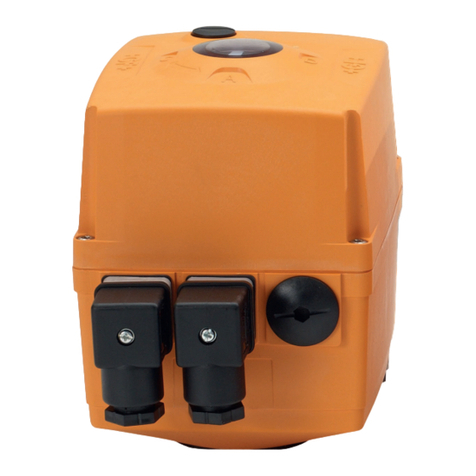
GF
GF EA25 instruction manual
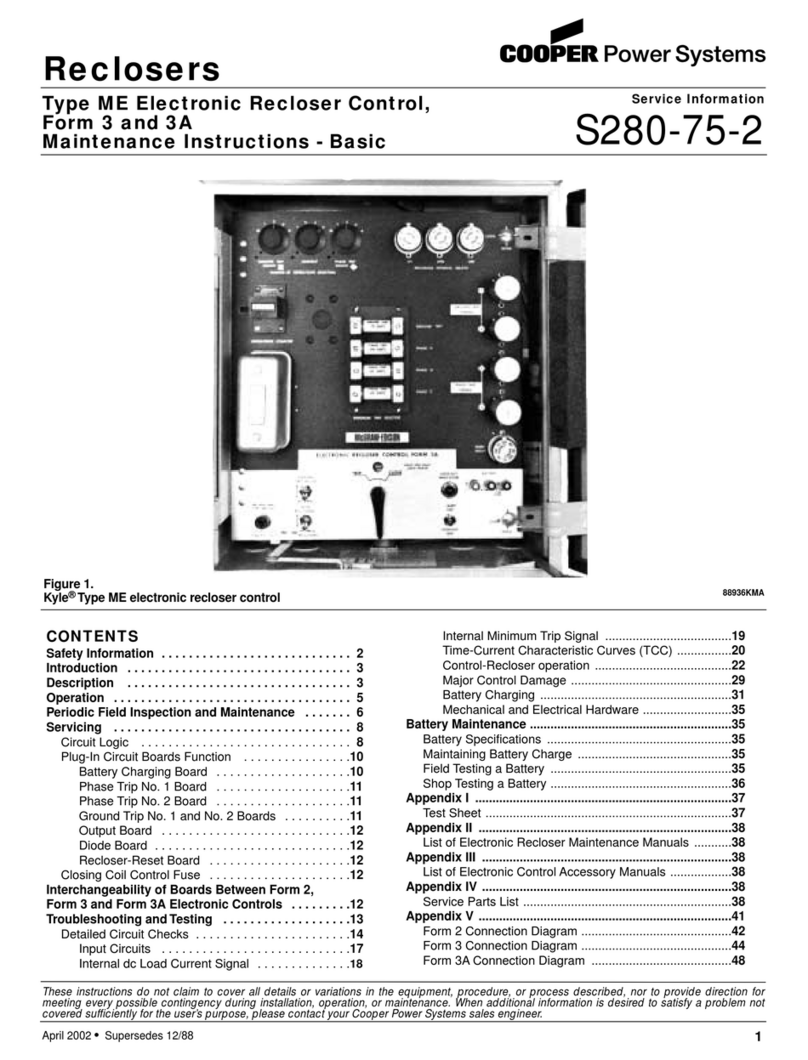
Cooper Power Systems
Cooper Power Systems Kyle Type ME Series Maintenance instructions
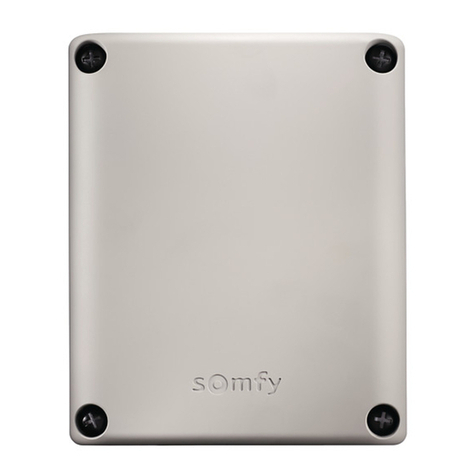
SOMFY
SOMFY CB 230 RTS installation instructions
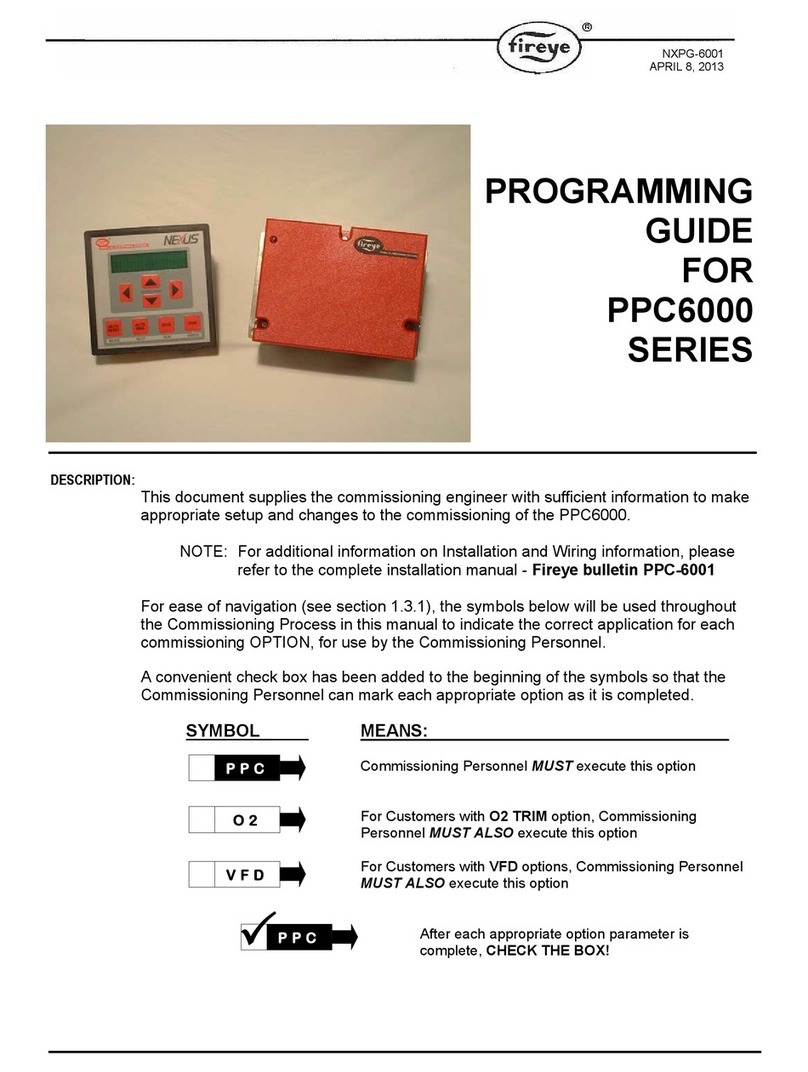
Fireye
Fireye PPC6000 Series Programming guide
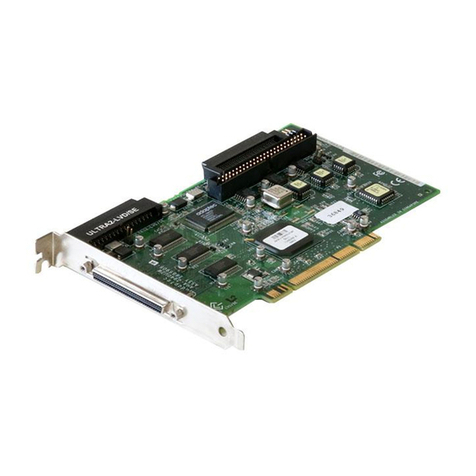
Adaptec
Adaptec 2930U2 - Storage Controller Ultra2 SCSI 80... User reference
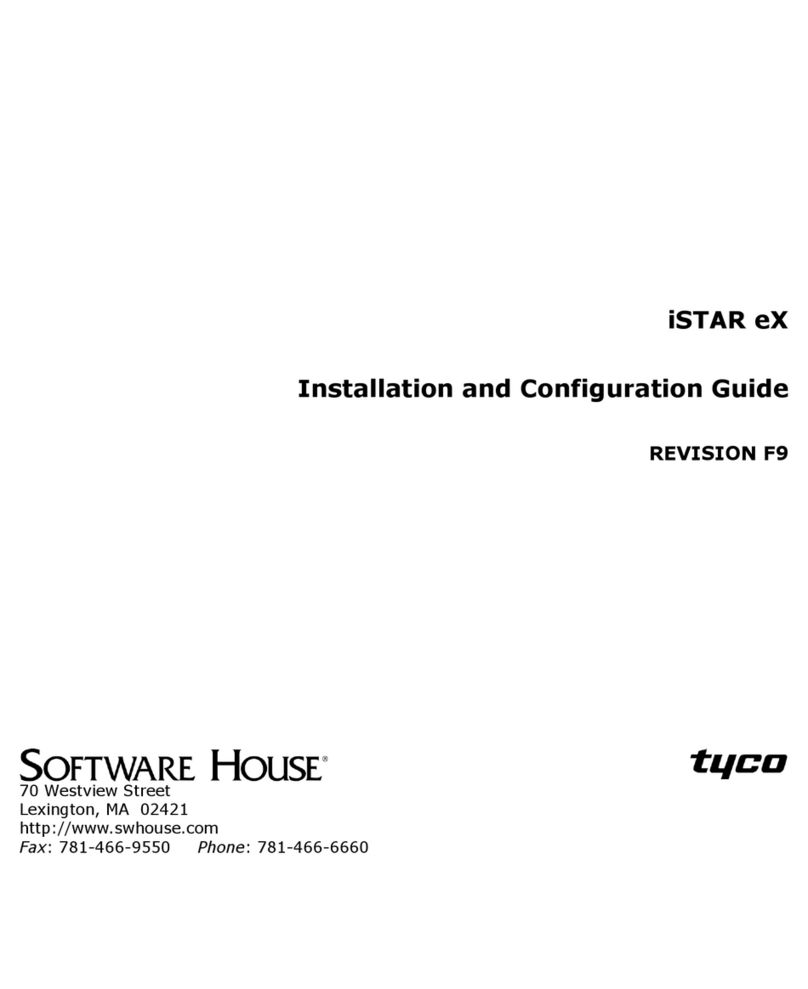
Tyco
Tyco iSTAR eX Installation and configuration guide
